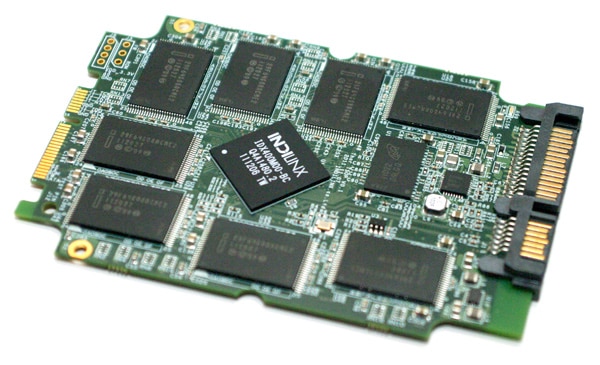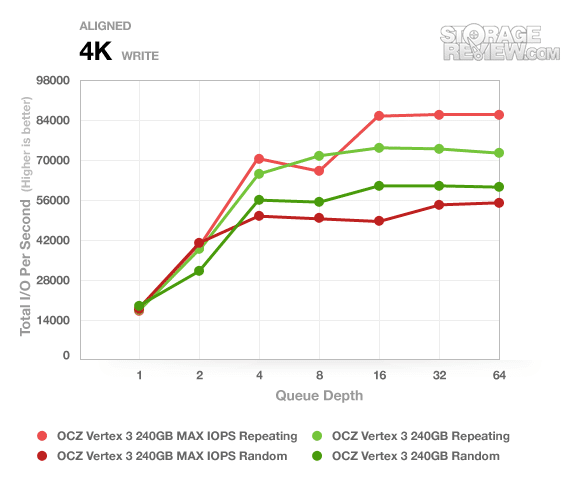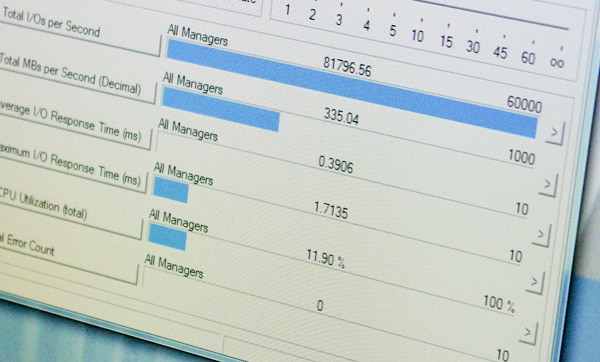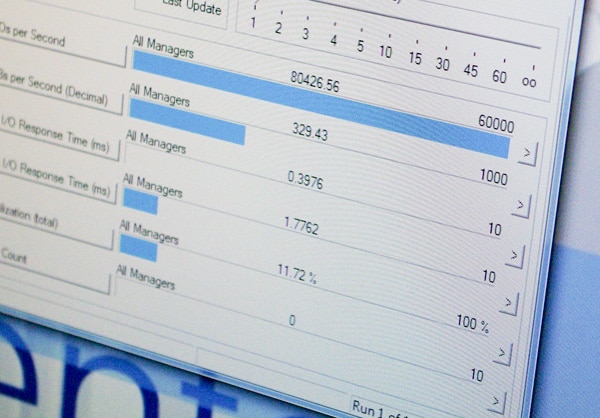
This week at CES we had to opportunity to see the new Indilinx-based Everest 2 reference board in action at the OCZ suite. While it is easy to look at performance numbers on paper, it’s entirely different seeing these results in front of you using our same accepted benchmarks. With a quick IOMeter preview, we were able to see the future OCZ Vertex 4 in action working with a 100% random 4K write workload.
To start off this comparison, we need to look at the performance of one of the fastest consumer drives on the market; the OCZ Vertex 3 Max IOPS. Below you can see its random 4K write performance scaling from a queue depth of 1 to a maximum of 64.
From our past benchmarking analysis, we indicated the 4K write speeds at a queue depth of 2 and 4 averaged between 42,000 IOPS and 50-70,000 IOPS depending on a repeating or incompressible data input. It also needed a heavier multi-threading environment to really max out the 4K random write speed. Note those figures as we look at the results below.
OCZ had a test rig setup showing off the random 4K write speeds of the Everest 2 platform or what will soon be called the Vertex 4. The Indilinx-driven platform has no incompressible write-speed slowdowns, unlike SandForce models that leverage compressible data to gain speed. At a queue depth of 32, the new OCZ drive measured roughly 81,800 IOPS write, where in the same type of test we measured right around 50,000 IOPS write from the Vertex 3 with incompressible data.
The next test lowered the queue depth to just 3, which is more about the range you might find on a system going through its average activities. In this test the level of performance at this queue depth quite literally blew us away.
As you can see above, the speeds barely budged… it dropped about 1,000 IOPS to 80,400 random 4K IOPS write. In that same scenario the Vertex 3 with Toshiba toggle NAND and the SandForce SF-2000 processor managed just 42,000 IOPS to 50,000 IOPS with incompressible data. That is a HUGE boost in performance when working with incompressible data.
While this was just a glimpse into this new platform, it is still very telling as to why OCZ might want to use this in their Vertex 4 SSD. They were able to leverage an entirely in-house solution that managed to outperform the SandForce processor in a worst-case scenario, and by a large margin at that. It is still very early to start making any conclusions about the Everest 2 platform, since we need to remember this is just a quick look at one specific workload. With that said though, OCZ seems to have quite a trick up its sleeve for next-generation high-performance SSDs.




